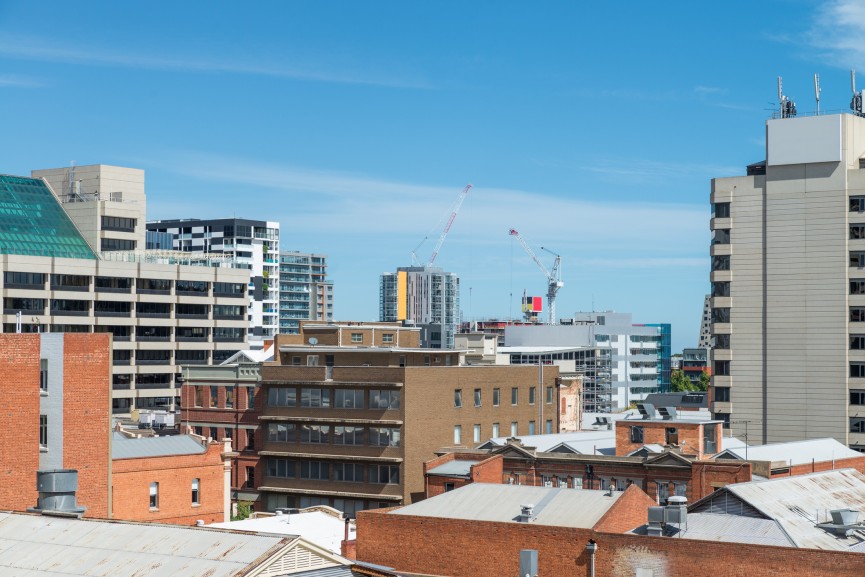We provide clients with many professional and technical services. For a detailed description, please select the relevant service.
Great
News
Mar 07, 2019 / News
How investors can benefit from urban renewal

As our population grows, the redevelopment of our cities is becoming more important than ever. This presents a great opportunity for investors.
Over half of the current population lives in urban areas1 and by 2045, the world’s population living in cities will increase by 1.5 times, to 6 billion. That’s roughly two-thirds of all people on the planet living in cities!2
But while urban growth is an important driver for the economy, managing it is a very different story.
City leaders will now have to move quickly to renew urban areas, providing basic services, infrastructure, and affordable housing for their expanding populations – something that savvy investors can capitalise on.
Why is urban renewal important?
Urban renewal recreates neighbourhoods and communities left behind due to demographic and economic change, by bringing back character and a sense of place.
All of these factors can help to improve the liveability of a city, the vibrancy of communities and economic growth.
What are the implications for investors?
Both public and private organisations are likely to invest significantly into property and infrastructure, offering real opportunity for investors to capitalise on infrastructure and property funds.
Companies who are actively building or managing these cities of the future, especially those listed on the stock exchange, may also offer good investment opportunities.
What are the investment options?
Infrastructure funds
Infrastructure funds invest in utilities, transportation, schools and other projects which are core to our communities. They also invest in significant projects that support community growth over many years.
Furthermore, since infrastructure is a basic need of every community, it is generally unaffected by the economic cycle. However, investment returns can be influenced by the risks of the project itself, such as operational risks, and government regulatory risks.
Investing in property funds
There are many listed or unlisted property funds to invest in, which can give you a share of residential and commercial property to diversify your portfolio.
It’s important to be aware that there are some risks associated with investing in bricks and mortar. Property prices can be volatile and the asset class itself is highly illiquid (you can’t pull your investment out quickly).
Publicly listed companies
In addition to investing in infrastructure and property funds, you may also want to consider investing in the publicly listed companies.
These investments serve an important purpose as urban populations continue to grow.
Property, infrastructure and construction company, Lendlease (ASX code: LLC)3 for instance, is a global leader in major urban renewal projects with $55.9 billion of developments in the pipeline. Development and construction company Mirvac Group (ASX code: MGR)4, as well as industrial property owner and developer Goodman Group (ASX code: GMG)5, also have a strong presence in urban renewal projects.
Urban renewal projects in development
There are a number of significant urban renewal projects currently in development in Australia. While you can’t invest in these directly, you can invest in the funds that do, as mentioned above.
Melbourne: $30 billion Fisherman’s Bend project
Melbourne has bedded down the Docklands/Victoria Harbour project, and now has the $30 billion Fisherman’s Bend project6 underway – the largest urban renewal project in the country. Fisherman’s Bend covers around 480 hectares of former industrial land south-west of Melbourne’s CBD, which is being transformed into a vibrant inner-city precinct, with hotels, businesses, housing and a new engineering campus of Melbourne University.
Sydney: $6 billion-plus Barangaroo precinct
Sydney has the $6 billion-plus Barangaroo precinct7, which is as an office, residential retail, cultural and dining hub nestled between Sydney Harbour and the western fringe of the CBD. The precinct features a six-hectare recreated original Sydney Harbour headland built as an entirely Australian native garden.
Brisbane: $2.9 billion redevelopment
Brisbane has undergone several decades of urban renewal since the 1988 World Expo, which now sees the South Bank leisure precinct playing host to playgrounds, picnic lawns, event venues, urban beaches, paddling pools and cafes.
For investors, rising population growth and the need to recreate cities that can support it, will present real opportunities to take advantage of.
How can Edwards Marshall Financial Solutions help you?
With so many ways you can get involved in both direct and indirect infrastructure and property investments, speak to your Nexia Edwards Marshall Advisor to discuss the best options for you.
About us
EMFS was formed in 2001 originally to service the financial planning needs of the clients of Nexia Edwards Marshall, Chartered Accountants. In addition, we now service clients referred by other accounting firms, lawyers and clients who are not serviced by Nexia Edwards Marshall. We manage funds totalling about $250m on behalf of clients.
1- http://www.worldbank.org/en/topic/urbandevelopment
2- http://www.worldometers.info/world-population/ – data current as at 9 October 2018
3- https://www.lendlease.com/-/media/llcom/investor-relations/annual-reports-and-securityholder-reviews/2018/2018-annual-report-lendlease.pdf, P.26.
4- http://groupir.mirvac.com/icms_docs/291482_MGR_FY18_Annual_Report.pdf, P.2.
5- https://www.goodman.com
6- https://www.fishermansbend.vic.gov.au
7- https://www.barangaroo.com/see-and-do/barangaroo/about
Contents of this publication are general of nature and are not intended to be used for decision making purposes. Edwards Marshall Financial Solutions Pty Ltd ABN 45 096 434 842 is an Authorised Representative of Edwards Marshall Advisory Pty Ltd ABN 18 600 878 555. AFS Licence No. 479 792.


